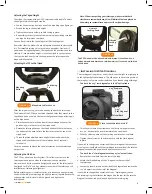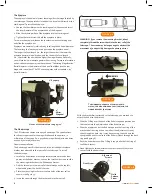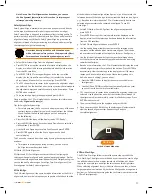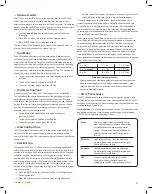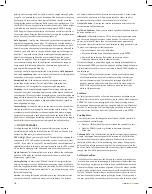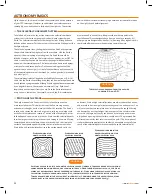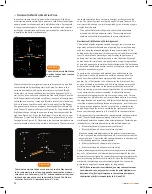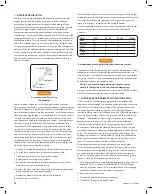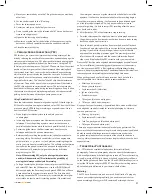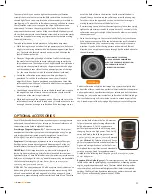
18
>>
www
.celestron
.com
TELESCOPE BASICS
A telescope is an instrument that collects and focuses light . The nature of
the optical design determines how the light is focused . Some telescopes,
known as refractors, use lenses. Other telescopes, known as reflectors,
use mirrors . The EdgeHD optical system (Aplanatic Schmidt) uses a
combination of mirrors and lenses and is referred to as a compound or
catadioptric telescope. This unique design offers large-diameter optics
while maintaining very short tube lengths, making them extremely
portable . The EdgeHD system consists of a zero power corrector plate, a
spherical primary mirror, and a secondary mirror along with a set of field
flattening lens integrated into the baffle tube. Once light rays enter the
optical system, they travel the length of the optical tube three times .
The optics of an EdgeHD telescope has StarBright XLT coatings –
enhanced multi-layer coatings on the primary and secondary mirrors
for increased reflectivity and a fully coated corrector for the finest
anti-reflection characteristics.
Inside the optical tube, a black tube extends out from the center hole in
the primary mirror. This is the primary baffle tube, and it prevents stray
light from passing through to the eyepiece or camera .
A cutaway view of the light path of the EdgeHD optical
FIGURE 5-1
Figure 4-1
A
cutaway view of the light path of the Edge HD
optical de sign
>>
Focusing
The CPC’s focusing mechanism controls the primary mirror which is
mounted on a ring that slides back and forth on the primary baffle tube.
The focusing knob, which moves the primary mirror, is on the rear cell
of the telescope just below the star diagonal and eyepiece. Turn the
focusing knob until the image is sharp. If the knob will not turn, it has
reached the end of its travel on the focusing mechanism . Turn the knob in
the opposite direction until the image is sharp. Once an image is in focus,
turn the knob clockwise to focus on a closer object and counterclockwise
for a more distant object. A single turn of the focusing knob moves the
primary mirror only slightly . Therefore, it will take many turns (about 30)
to go from close focus (approximately 60 feet) to infinity.
For astronomical viewing, out of focus star images are very diffuse,
making them difficult to see. If you turn the focus knob too quickly,
you can go right through focus without seeing the image . To avoid this
problem, your first astronomical target should be a bright object (like the
Moon or a planet) so that the image is visible even when out of focus .
Critical focusing is best accomplished when the focusing knob is turned
in such a manner that the mirror moves against the pull of gravity. In
doing so, any mirror shift is minimized. For astronomical observing, both
visually and photographically, this is done by turning the focus knob
counterclockwise .
FIGURE 5-2
Actual image orientation as seen
with the unaided eye
Reversed from left to right, as
viewed with a Star Diagonal
Inverted image, as viewed with
the eyepiece directly
in telescope
>>
Image Orientation
The image orientation changes depending on how the eyepiece is
inserted into the telescope . When using the star diagonal, the image is
right-side-up, but reversed from left-to-right (i .e ., mirror image) .
If inserting the eyepiece directly into the visual back (i.e., without the
star diagonal), the image is upside-down and reversed from left-to-right
(i .e ., inverted) . This is normal for the Schmidt-Cassegrain design .
The emblem on the end
of the focus knob shows
the correct rotational
direction for focusing
the CPC.
FIGURE 5-3
FOCUS
Summary of Contents for 11007
Page 1: ...InstructionManual 11007 11008 11009...
Page 2: ...www celestron com...
Page 40: ...38 www celestron com APPENDIXD MAPSOFTIMEZONES...
Page 41: ...www celestron com 39...
Page 42: ...40 www celestron com APPENDIXE SKYMAPS...
Page 43: ...www celestron com 41...
Page 44: ...42 www celestron com...
Page 45: ...www celestron com 43...
Page 46: ...44 www celestron com...
Page 47: ...www celestron com 45...


